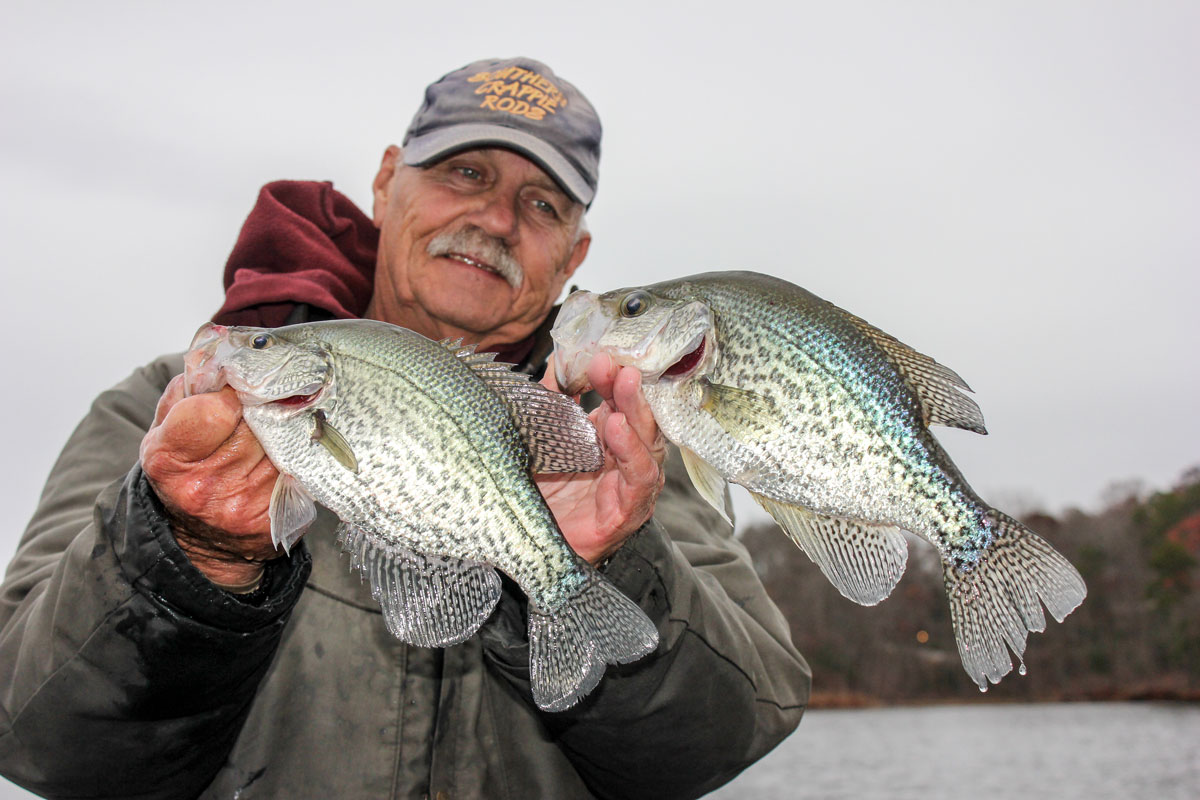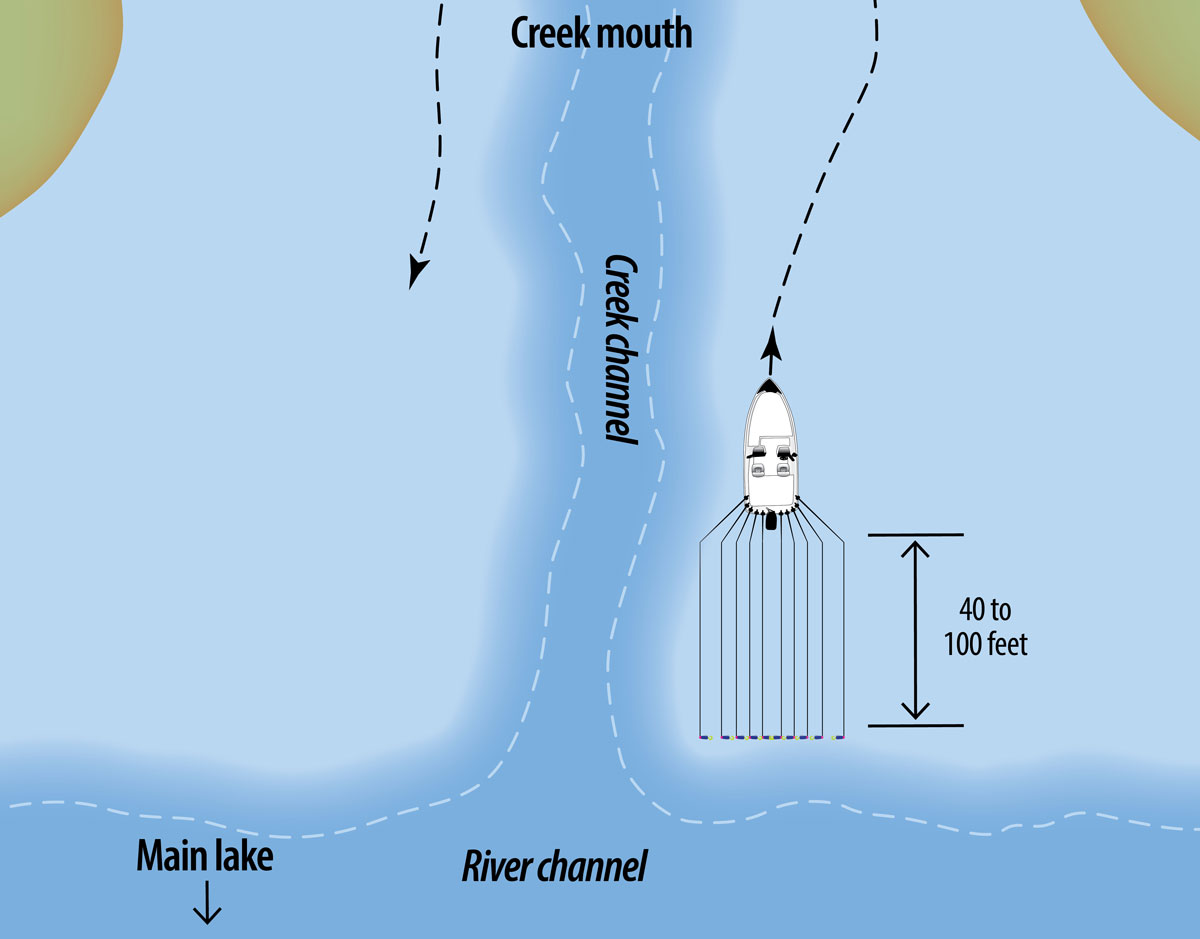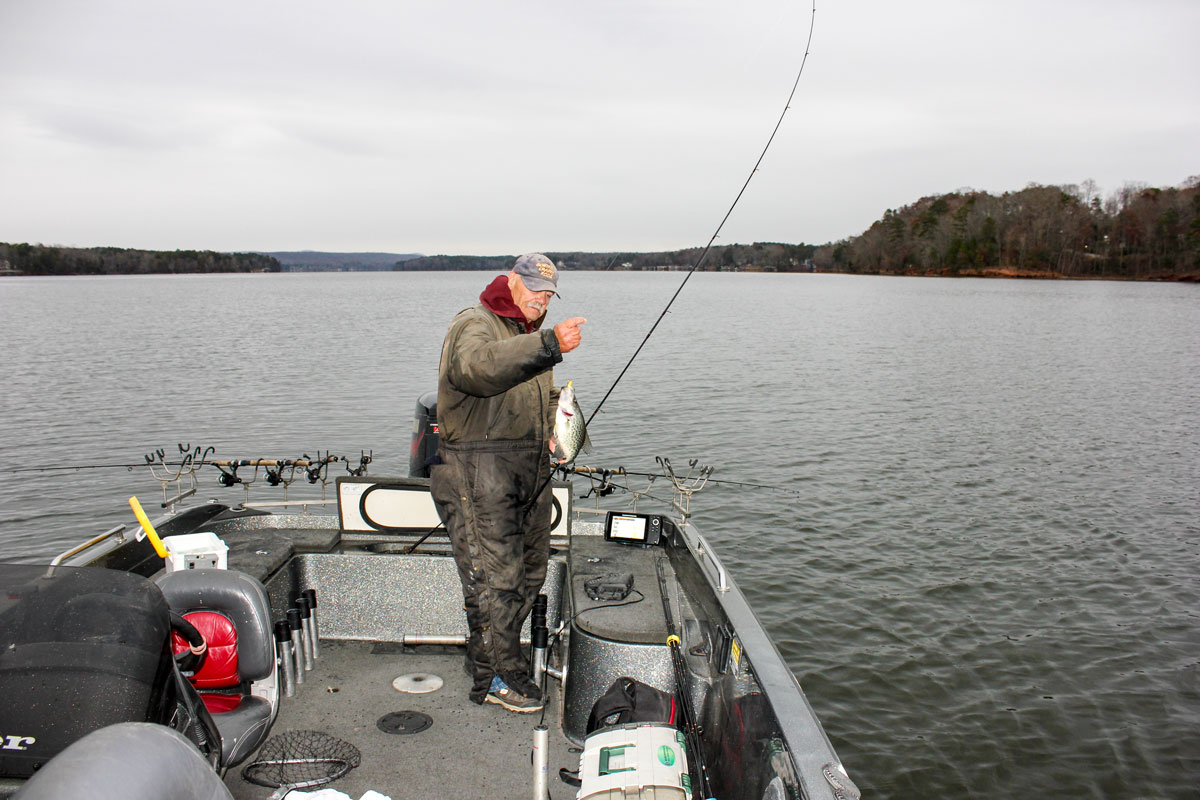
February might be cold, but spring is just around the corner, and Lake Tillery crappie know it’s time to head to their prespawn staging areas.
Under normal circumstances, February is likely to remain a relatively cold, winter month, with only premonitions of spring peeking through its icy exterior. But those subtle differences will be the only prompting necessary to nudge crappie into feeding position for the prespawn stages, especially at Lake Tillery, which is northeast of Charlotte, N.C. on the Yadkin-Pee Dee River system.
Despite its influence on the timing of the spring spawn, water temperature isn’t the only factor that points slabs towards reproduction. According to Ed Duke of Concord, the lengthening amount of daylight is the first signal.
“Even if you have a cold winter, the daylight in February plays more in effect than the water temperature itself,” said Duke, a long-time crappie tournament fisherman and owner of Southern Crappie Rods. “It triggers the crappie to know that something’s supposed to happen at that time, regardless.”
The happening Duke refers to is crappie assembling in the mouths of the creeks in which they will later spawn. While 5,260-acre Tillery has plenty to choose from, a productive area must meet certain criteria. Duke believes that a creek mouth in the 30- to 35-foot depth range that runs close to the main river channel will give crappie sufficient shielding from sudden cold snaps and thus, the confidence to rise in the water column and be more active.
“That’s why they’re in the deeper water,” said Duke. “They can go through the motions of prespawn, and if it gets too cold at night, they’ve got the deeper water they can go to and move a minimal amount.”
In addition to depth, Tillery’s generally clear water will also help narrow down possible areas. As a cover-loving fish, crappie feel most vulnerable in open water, and clear water amplifies the apprehension.
“The best cover a crappie can have is dingy water,” Duke said. “That’s the most comfortable zone they have. They feel like they’re hiding.
“The first thing you do is go up the lake; that’s generally where you’re going to find the most color. But if you’ve got a good, running creek that can flow water in, that can put color into it. There are creeks down the lake like Jacobs Creek and Rocky Creek that have dingy water.”
 Duke’s preferred method for thinning out the scattered schools of early prespawn crappie is long-line trolling; several years ago, he developed a series of rods to meet his specifications. Using up to 10 rods at a time, with two 16-foot rods set nearly parallel to the transom, he drags a spread of baits almost 40 feet wide. From the outside rods, he angles in slightly, using 14-, 12-, 9-, and 7-foot rods on either side of the boat until the last two point straight back from the stern, along either side of the motor.
Duke’s preferred method for thinning out the scattered schools of early prespawn crappie is long-line trolling; several years ago, he developed a series of rods to meet his specifications. Using up to 10 rods at a time, with two 16-foot rods set nearly parallel to the transom, he drags a spread of baits almost 40 feet wide. From the outside rods, he angles in slightly, using 14-, 12-, 9-, and 7-foot rods on either side of the boat until the last two point straight back from the stern, along either side of the motor.
“Any time you find the fish suspended in open water is a more productive time to fish, and a sunny day with no wind will make them come up closer in the water column,” Duke said. “A good rule of thumb to start trolling at is 15 feet deep. If I’m using my standard, 1/16-ounce head on 6-pound line, I’m going to troll at .6 or .7 on my GPS. What I do is try to start at the main part of a creek or cove that connects to the main-river channel, the deepest part, and work my way towards the inside.
“The smaller fish will school up heavier than the larger fish. If you’re marking a bunch of fish at, say, 20 feet deep, fish those fish, but you always want to look for scattered fish that may be even 12 feet deep. The bigger fish stay at a slightly different water depth because they act as loners.
“The fish generally move vertically. The ledges on the river and creek work good for them, because they can just move up and down the structure. But even from the first of February, if it’s calm and sunny, the fish can rise as shallow as 3 or 4 feet under the boat, even in 50 feet of water.”
reach stubborn fish barely off the bottom. Jigs will follow from 40 to 100 feet behind, with the cleanest water requiring the longest distance.
 While he experiments with a variety of colors in 2-inch, soft-plastic curlytails, he often finds a two-tone blue and chartreuse to be the top producer. However, he will change jighead colors to find the most favored, switching between red, blue and black. Duke said that tipping jigheads with minnows is often unnecessary at Tillery when trolling, but it can be beneficial for sluggish fish.
While he experiments with a variety of colors in 2-inch, soft-plastic curlytails, he often finds a two-tone blue and chartreuse to be the top producer. However, he will change jighead colors to find the most favored, switching between red, blue and black. Duke said that tipping jigheads with minnows is often unnecessary at Tillery when trolling, but it can be beneficial for sluggish fish.
In addition to marking crappie on sonar, the correct baitfish presence is also important. While many anglers think they’ve hit the jackpot when encountering huge schools of bait, Duke shies away from these areas.
“If I see a bunch of big bait balls on my sonar, I don’t fish there,” he said. “But If I find bait that’s been busted up into smaller pods, that tells me something has been feeding on them, and it’s worth giving that area a shot.”
DESTINATION INFORMATION
HOW TO GET THERE — Lake Tillery is 8 miles southeast of Albemarle, best accessed from east and west by NC 24/27/73, and north and south from US 52. The Swift Island boat access at the NC 24/27/73 bridge is a popular ramp.
WHEN TO GO — Crappie will begin staging at creek mouths in early February as days become longer. Sunny, calm days will be best as slightly warmer water will cause crappie to move toward the surface and become more active.
BEST TECHNIQUES — Long-lining using a handful of rods (Southern Crappie Rods is a popular brand) is the ticket for staging and prespawn crappie. Use longest rods on the outside and go progressively shorter as you approach the motor on the transom. Spool small spinning reels with 6-pound monofilament, tied to 1/16-ounce jigheads in red, black or blue, with brightly colored 2-inch soft-plastic curlytail grubs; blue/chartreuse is a productive color. Jigs are pulled 40 to 100 feet behind the boat at .6 to .7 mph.
FISHING INFO/GUIDES — Maynard Edwards, Yadkin Lakes Guide Service, 336-249-6782, www.ExtremeFishingConcepts.com; Joe’s Bait & Tackle, Albemarle, 704-982-87216; Ed Duke, Southern Crappie Rods, 704-791-0108, www.southerncrappierods.com. See also Guides and Charters in Classifieds.
ACCOMMODATIONS — America’s Best Value Inn, Albemarle, 704-982-3939; Holiday Inn Express and Suites, Albemarle, 704-986-2100; Stanly County Chamber of Commerce, 704-982-8116, www.stanly-chamber.org.
MAPS — Delorme’s N.C. Atlas and Gazetteer, 207-946-7000, www.delorme.com; Fishing Hot Spots, 800-ALL-MAPS, www.fishinghotspots.com.




Be the first to comment